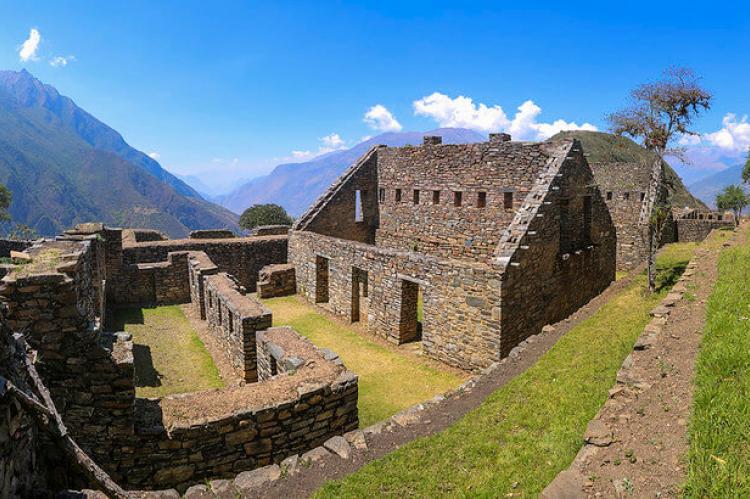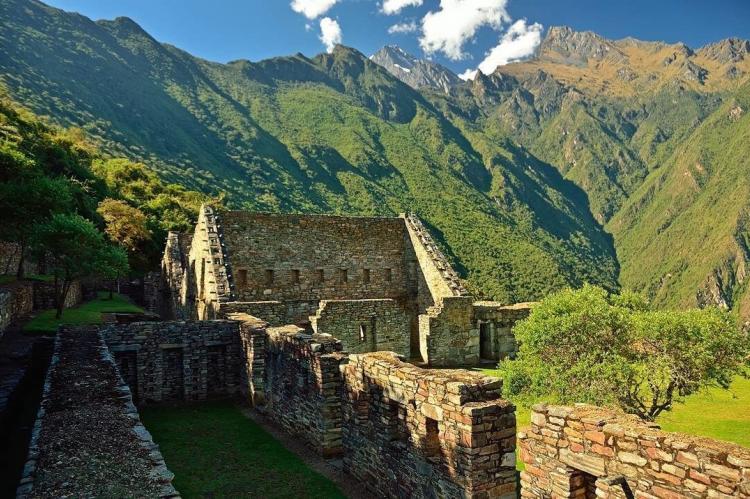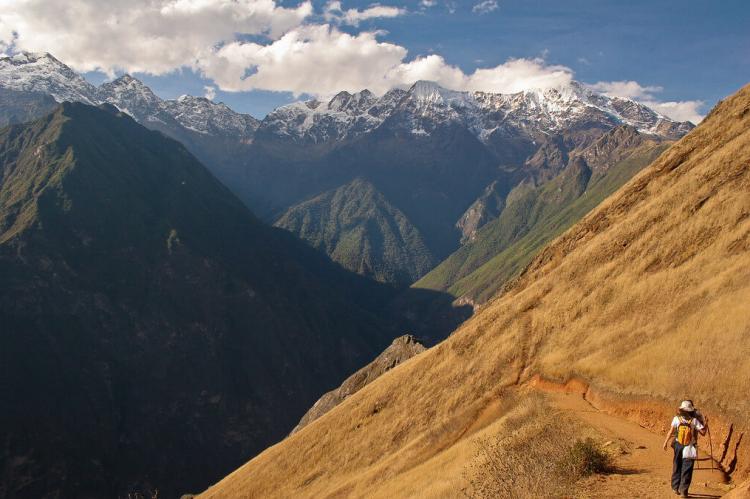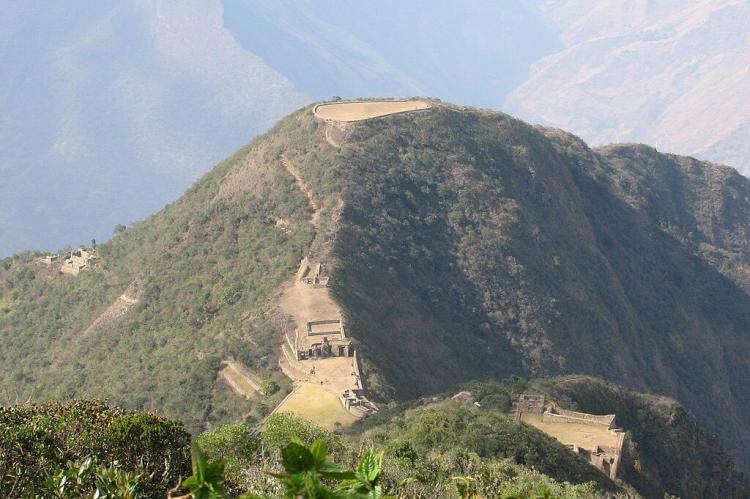Choquequirao Archaeological Park (Peru)
Choquequirao is an Incan archaeological complex, similar in structure and architecture to Machu Picchu, tucked into the Vilcabamba mountains in the Cusco region of southern Peru. It is located on a glaciated peak overlooking the Apurimac River canyon.
Choquequirao Archaeological Park
Choquequirao is an Incan archaeological complex, similar in structure and architecture to Machu Picchu, tucked into the Vilcabamba mountains in the Cusco region of southern Peru.
Located 98 km (60 mi) west of Cusco, the site is located on a southwest-facing spur of a glaciated peak at an elevation of 3,050 m (10,010 ft) asl. It overlooks the Apurimac River Canyon, which has a height of 1,450 m (4,760 ft). Presently the only way to access Choquequirao is by an arduous trek.
Choquequirao is filled with ruined buildings and terraces that sit below a flattened hilltop that was leveled several hundred years ago and ringed with stones to create a platform. Built during the reign of King Pachacuti Inca Yupangui, Choquequirao is believed to be the last city that the "Sons of the Sun" took refuge in when fleeing Cusco in the 16th century.
Choquequirao Archaeological Park is approximately 1,800 ha (4,448 acres) in size, of which 30 - 40% is excavated. The first excavations in the area didn't begin until the 1970s.
Similar in structure and architecture to Machu Picchu, the ruins include buildings and terraces above and below Sunch'u Pata, the truncated hill top which was anciently leveled and ringed with stones to create a 30 by 50 m (98 - 164 ft) platform.
What has been uncovered to date follows traditional Inca construction: a temple and some administrative buildings are positioned directly around a central square, with the living quarters of more common people further out.
One of the most impressive features around Choquequirao is a set of terraces that incorporate figures of llamas or alpacas. The shapes of the animals have been set into the large terraces using carefully carved white rock.
The main structures, such as temples, huacas (monuments), elite residences and fountain/bath systems, are concentrated around two plazas along the crest of the ridge and follow Inca urban design. There is also a conglomeration of common buildings clustered away from the plaza. Excavations and surface items suggest they were probably used for workshops and food preparation. Most buildings are well-preserved and well-restored; restoration continues.
The terrain around the site was significantly modified. The central area of the site was leveled artificially, and the surrounding hillsides were terraced to allow cultivation and small residential areas. The typical Inca terraces form the largest constructions on site.
Many of the ceremonial structures are associated with water. Two unusual temple sites lie several hundred meters lower than the two plazas. These are carefully crafted step terraces down a steep slope designed around water.
The site also contains several ceremonial structures, such as the large usnu (pyramid-shaped structure) built on a truncated hilltop, the Giant Staircase, and an aqueduct providing water to the water shrines.





